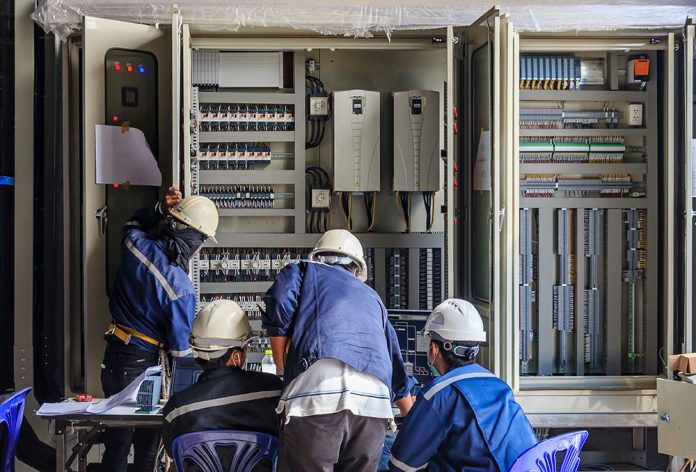Smart water meters are transforming how utilities manage and deliver water, enabling precision in leak detection, consumption monitoring, and usage forecasting. Yet, for all their promise, they face a hidden but growing problem in inaccurate or incomplete data, says Umair Ejaz, of Tuxera.
Without dependable data, utilities cannot make informed decisions or respond effectively to anomalies like leaks, theft, or unusual consumption patterns. In the water sector, where every drop counts, this issue is fast becoming a threat to operational efficiency, customer trust, and regulatory compliance.
Why smart water meters fall short
Today’s smart water meters log and transmit data at various frequencies, depending on whether they are residential or industrial, and if there are events like leaks, tampering, or radio communication errors. At the heart of these systems lies embedded flash memory, typically NOR flash, which delivers low power consumption and reliability.
Smart water meters often rely on NOR flash memory to store usage data, logs, and firmware updates. because it strikes the right balance between efficiency and dependability. It uses very little power, which is ideal for battery-operated meters designed to last over a decade without maintenance.
Background processes like garbage collection place additional stress on memory. In addition, smart water meters running on low power mode and switching to active mode can corrupt write operations if not properly managed. Without robust software-level resilience, meters begin to fail early, and data reliability declines silently.
Unlike total device failure, data inaccuracy often goes unnoticed at first. Over time, this leads to missed logs, billing errors, and skewed analytics. Customers may question unexpected charges, while utilities face mounting customer complaints and unplanned costs.
Cost of inaccuracy
Unlike total device failure, inaccurate or incomplete data doesn’t always raise immediate red flags. Customers may become frustrated with unexplained charges or erratic meter readings. This year, in Plano, Texas, approximately 90% of the city’s 87,000 water meter transmitters failed due to battery depletion and a faulty software update. This malfunction forced the city to revert to manual readings, incurring significant costs and raising concerns about billing accuracy. Last year, residents in Franklin Park, Illinois, experienced sudden spikes in water bills – some exceeding $2,000 – after the installation of new meters. The village attributed these increases to previous underestimations and the new meters reflecting actual usage, leading to public outcry and demands for meter verification.
The result? Utilities face mounting calls to investigate discrepancies, increasing the burden on customer service teams and field engineers. Frequent faults and inaccuracies may lead utilities to replace meters prematurely. With smart water meter replacements ranging from $400 to over $10,000 per unit, the financial risk escalates quickly when deployed across thousands of connections.
Understanding root causes
Resilience to power fluctuations is essential in smart water meter design. Meters routinely shift between low-power and active modes to conserve energy and extend battery life. However, these frequent wake-sleep transitions, especially in field deployments exposed to brownouts or unstable voltage, can disrupt write operations to memory. If a meter is writing data during a sudden power drop or reactivation, there’s a risk of data being partially written or corrupted. Without proper safeguards, these errors go undetected and accumulate over time, silently impacting the accuracy of meter readings and event logs.
Over several years of operation, the cumulative effect of these power interruptions begins to undermine reliability. Even when meters continue to function, their data can become inconsistent, triggering billing errors, compliance risks, and increased costs. This can also shorten the lifespan of a meter, undermining ROI for utilities and manufacturers, leading to further costs.
Flash memory wear is one of the primary technical causes behind smart meter data inaccuracy. Each time a water meter records a reading or logs an event, it performs a write operation to flash memory. Over time, the cumulative stress from frequent writes, environmental fluctuations, and routine firmware updates leads to degradation. When standard file systems that are not optimized for NOR flash memory are used, they exacerbate wear by inefficiently handling these operations.
Integrity in design
Addressing these challenges doesn’t require an overhaul of hardware or a significant increase in production costs. The most effective solutions lie in smarter design at the software level.
Embedded systems optimiZed for NOR flash memory can dramatically improve data accuracy and meter longevity. These file systems are built to manage frequent data logging and storage operations in a way that minimizes unnecessary write and erase cycles. Features like wear leveling, and fault-tolerant logging ensure that memory is used efficiently and data integrity is preserved, even after tens of thousands of power cycles.
This kind of software resilience is especially valuable to smart water meters, where low power consumption is critical. In fact, a flash-friendly file system or a file system specifically designed for NOR flash uses optimized write and erase operations that help with reduced power consumption and extend the battery and overall meter lifetime compared to standard or general file systems.
By integrating flash-aware design principles from the outset, manufacturers can reduce field failures, increase meter lifetime, and avoid early replacements. This boosts the longevity of devices without adding hardware complexity and costs. In addition, it supports utilities’ sustainability goals, ensuring that smart meters deliver environmental and operational returns.
Ultimately, this approach supports long-term ROI for utilities, ensuring high data quality and system reliability while keeping maintenance costs and battery demands to a minimum.




